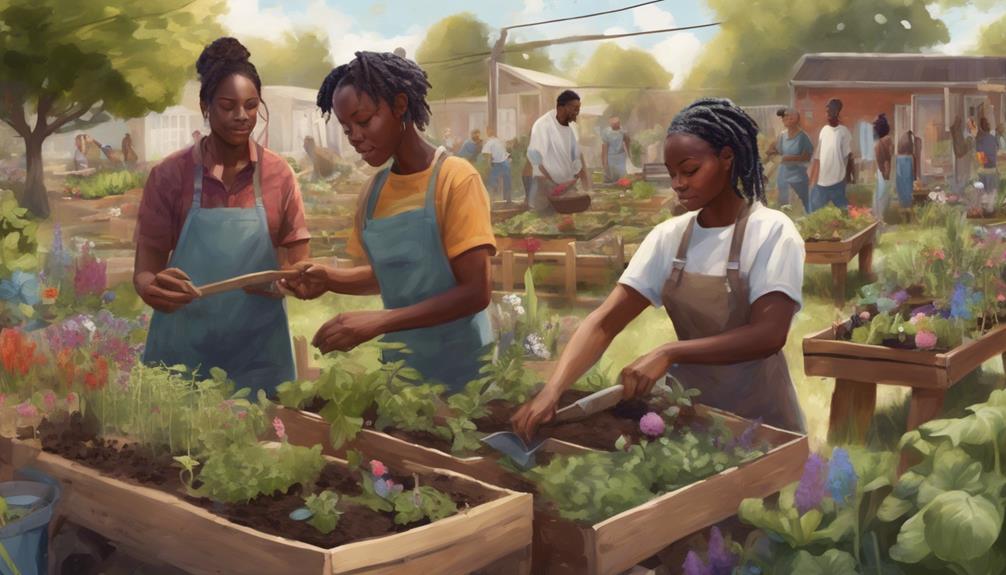In exploring the dynamics of community assistance, a rational examination of the ways in which individuals support one another reveals a complex web of interactions. The notion of altruism, often hailed as a cornerstone of communal bonds, raises intriguing questions about the underlying motives behind acts of kindness. Are these gestures truly selfless, or are they driven by an innate desire for reciprocal benefits? As we delve deeper into the mechanisms of community aid, a deeper understanding of human nature and societal cohesion emerges, prompting us to ponder the true essence of helping behaviors.
Key Takeaways
- Neighborly acts of kindness foster camaraderie and interconnectedness.
- Community volunteer initiatives involve mentoring, teaching, and companionship.
- Community watch programs and crime prevention strategies enhance safety.
- Sharing resources locally through food banks, clothing drives, and tool libraries.
Neighborly Acts of Kindness
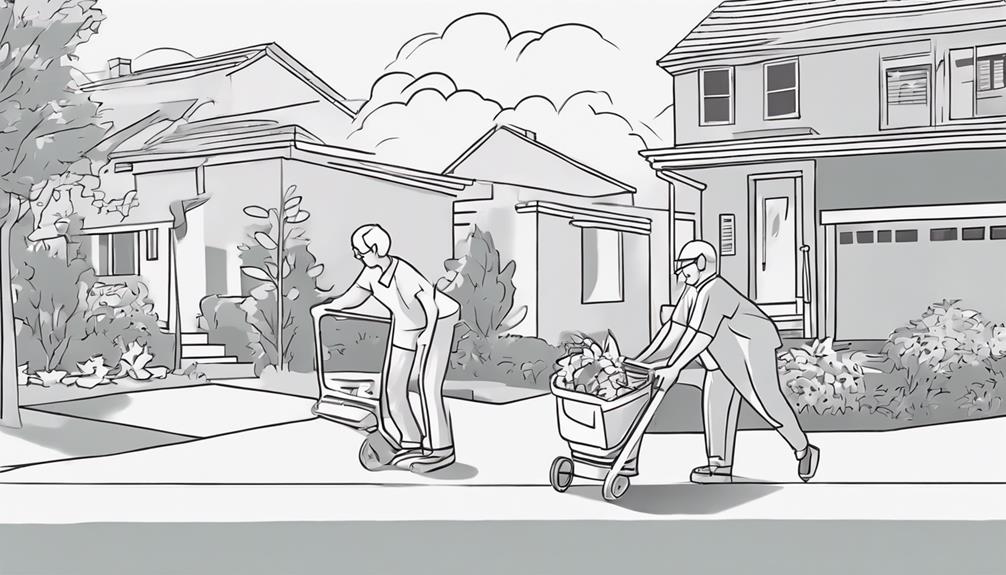
Neighborly acts of kindness exemplify the altruistic behaviors displayed within communities, showcasing the interconnectedness and support among neighbors. From helping with yard work to providing emotional support during tough times, these gestures foster a sense of unity and camaraderie. In addition to individual acts of kindness, communities often organize neighborhood watch programs to enhance safety and security collectively. These programs encourage residents to look out for one another, report suspicious activities, and collaborate to keep their neighborhood safe.
Emotional support is another crucial aspect of community support demonstrated through neighborly acts of kindness. Whether it's lending a listening ear, offering a shoulder to lean on, or providing assistance with childcare, neighbors play a vital role in supporting each other's well-being. These small yet impactful gestures not only strengthen the bonds within the community but also create a supportive environment where individuals feel valued and cared for during challenging times.
Community Volunteer Initiatives
Community Volunteer Initiatives play a vital role in enhancing social cohesion and addressing various community needs through active engagement and altruistic contributions.
Key Points:
- Diverse Support Activities: Community volunteer initiatives involve a range of activities such as mentoring, teaching, and providing companionship to the elderly, catering to a variety of community needs.
- Connection and Impact: Volunteering in local charity events, clean-up drives, and educational workshops not only fosters connections within the community but also creates a positive impact on society as a whole.
- Direct Community Benefits: Engaging in hands-on activities like gardening, construction projects, and disaster relief efforts directly benefits communities in need by providing essential support and resources.
- Addressing Basic Needs: Food-related volunteering, including participating in food drives and serving meals at homeless shelters, plays a crucial role in addressing hunger issues and supporting those facing food insecurity.
Building Support Networks
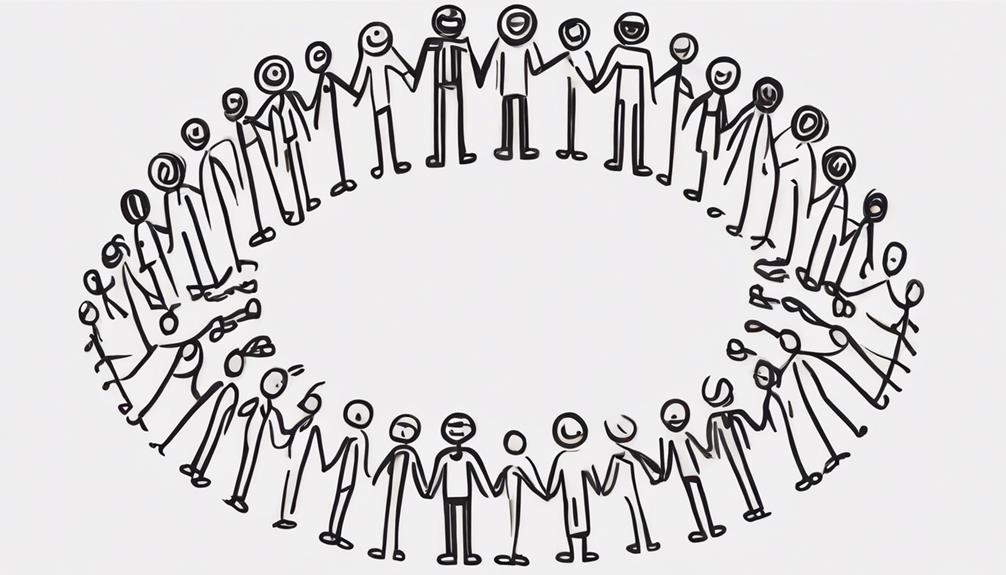
The establishment of robust support networks within communities is integral to fostering resilience, promoting mental well-being, and enhancing social cohesion through reciprocal assistance and solidarity among individuals. Building support networks involves creating social connections that offer emotional, practical, and social assistance to individuals within the local community. These networks play a crucial role in providing resources, guidance, and a sense of belonging to those facing challenges, thereby contributing to the overall mental health of the community members.
Support networks commonly consist of friends, family, neighbors, community organizations, and support groups. Through fostering relationships that offer mutual aid, encouragement, and solidarity, people help each other navigate various life circumstances, ultimately strengthening the fabric of the community. By promoting social connection and offering a support system, these networks contribute significantly to the well-being of individuals and the community as a whole. In essence, building robust support networks is a cornerstone of creating a resilient and cohesive local community.
Collaborative Community Projects
Multiple individuals coming together to collaborate on community projects have been shown to significantly impact social cohesion and collective well-being within local neighborhoods. Collaborative community projects offer volunteering opportunities near residents, allowing them to engage in meaningful activities that benefit the entire community. Here are four key aspects to consider:
- Shared Goals: Collaborative community projects involve setting common objectives that aim to enhance the local environment or address specific community needs.
- Diverse Contributions: Volunteers bring a variety of skills, resources, and perspectives to these projects, creating a rich tapestry of support and expertise.
- Social Connection: Working together on community projects fosters relationships among participants, strengthening the social fabric of the neighborhood.
- Sustainable Impact: By investing time and effort into collaborative community projects, individuals can create lasting positive changes that promote a sense of pride and ownership in the community.
Engaging in collaborative community projects not only improves the physical landscape but also nurtures a sense of unity and empowerment among residents, leading to a more resilient and harmonious community.
Mutual Aid in Communities
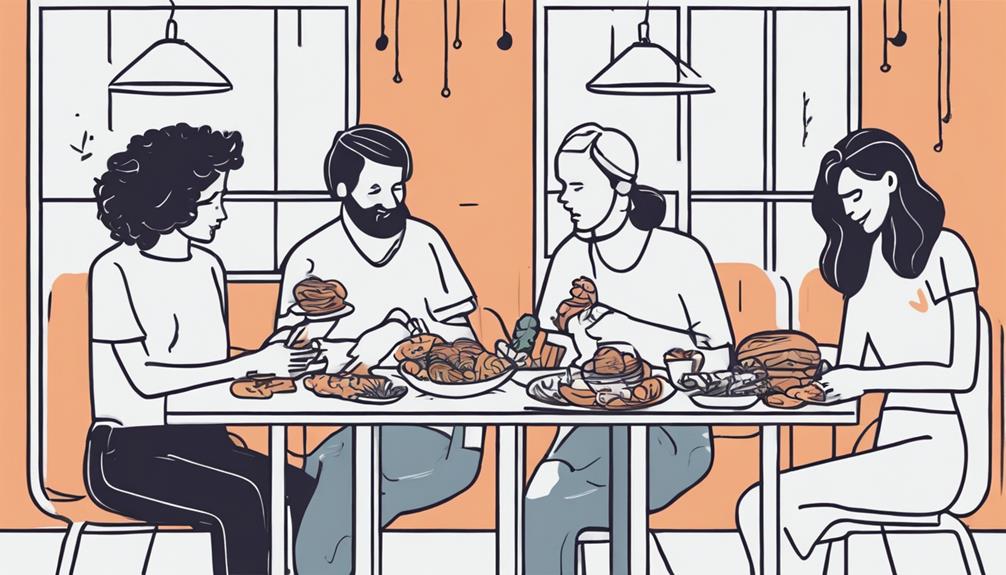
Mutual aid in communities is a concept that raises questions about the effectiveness and sustainability of shared resources in times of crisis. It prompts an examination of how solidarity and trust are built within these networks and whether they truly foster a sense of community support. Understanding the mechanisms behind mutual aid efforts is crucial to assessing their impact on social cohesion and resilience within communities.
Building Community Support
In community settings, the practice of mutual aid plays a vital role in fostering resilience and empowerment among individuals by facilitating collective support and resource-sharing.
- Promotes Solidarity: Mutual aid initiatives create a sense of unity and cooperation among community members, strengthening social bonds.
- Enhances Community Support: By coming together to address each other's needs, mutual aid builds a network of support that benefits all involved.
- Empowers Individuals: Through mutual aid, individuals feel empowered to contribute to the well-being of their community and receive help when needed.
- Addresses Systemic Issues: Mutual aid efforts often extend beyond immediate needs, aiming to tackle underlying systemic issues through collaborative action.
Sharing Resources Collectively
Building upon the foundation of community support, the practice of sharing resources collectively through mutual aid initiatives in communities serves as a pivotal mechanism for fostering resilience and empowerment among individuals. Mutual aid emphasizes solidarity and cooperation within a community, enabling members to address shared needs through grassroots efforts. By pooling resources like food, shelter, and medical care, individuals participate in a reciprocal exchange that transcends traditional support systems. This approach not only bolsters community solidarity but also challenges systemic inequalities by directly assisting marginalized groups. Through volunteerism and collective decision-making, mutual aid initiatives engender a sense of belonging and mutual support, showcasing the power of communal collaboration in fostering resilience and empowerment.
Fostering Solidarity and Trust
Solidarity and trust within communities are cultivated through the collaborative sharing of resources, support, and expertise during times of mutual aid initiatives.
- Mutual aid in communities strengthens social bonds through shared resources and cooperation.
- Collective efforts foster resilience and empower individuals within the community.
- Solidarity promotes a sense of belonging and enhances overall well-being for residents.
- Trust and mutual aid initiatives reduce isolation, creating a culture of reciprocity and interconnectedness.
Community Watch Programs
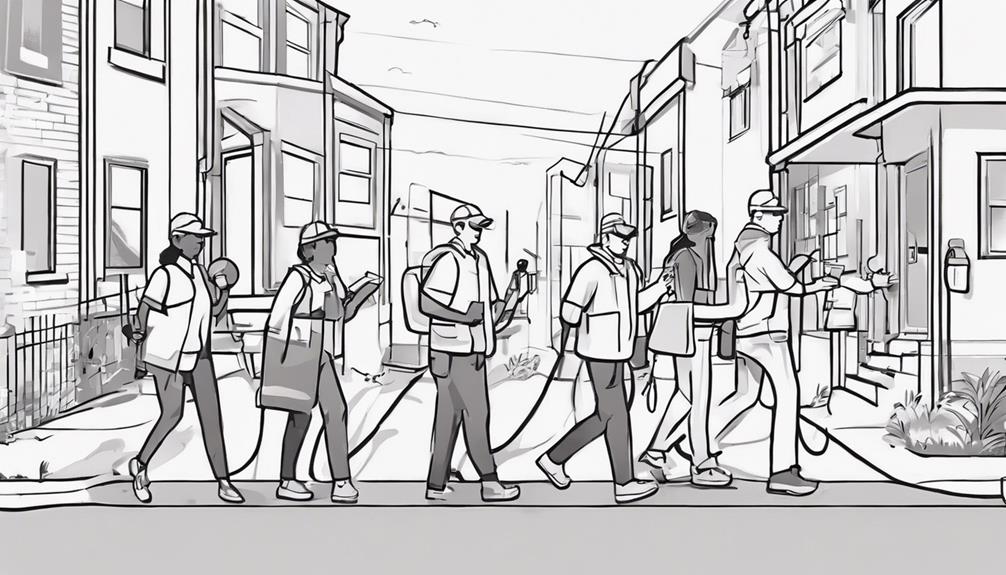
Community watch programs have gained popularity as a strategy to enhance neighborhood safety, but their effectiveness is a subject of ongoing debate. While proponents argue that these programs deter crime and foster community cooperation, skeptics question their long-term impact and sustainability. Research into the outcomes of community watch programs is crucial to determine their true effectiveness in crime prevention and community building.
Crime Prevention Strategies
Residents collaborating with law enforcement in community watch programs play a crucial role in preventing crime through vigilant monitoring and reporting of suspicious activities. These programs are essential in enhancing crime prevention strategies and fostering neighborhood unity. Key components include:
- Increased Surveillance: Community members actively monitor their surroundings, deterring criminal activities.
- Timely Reporting: Prompt reporting of suspicious behavior to authorities aids in preventing crimes before they occur.
- Training Programs: Education on crime prevention techniques equips residents with necessary skills to ensure effective community watch.
- Communication Channels: Establishing clear communication channels between residents and law enforcement enhances the efficiency of community watch programs.
Successful implementation of community watch initiatives not only reduces crime rates but also strengthens bonds within the community, promoting a sense of safety and unity.
Building Trust and Unity
Enhancing neighborhood cohesion and security through vigilant community monitoring programs is a pivotal strategy in fostering trust and unity among residents. Community watch programs, where residents actively patrol their neighborhoods, play a significant role in creating a safer environment by deterring criminal activities. By participating in these initiatives, individuals not only contribute to crime prevention efforts by reporting suspicious behavior but also build stronger bonds with their neighbors. Research indicates that areas with active community watch programs experience lower crime rates and increased feelings of safety among residents. This shared responsibility for maintaining security instills a sense of trust and unity within the community, creating a network of support that enhances the overall well-being of the neighborhood.
Sharing Resources Locally
Sharing resources locally fosters a sense of interconnectedness and support among individuals within a community.
- Food Banks: Local communities often utilize food banks to share essential food items, where donations from individuals help support those in need.
- Clothing Drives: Collaborative efforts in clothing drives ensure that necessary clothing and items are provided to community members facing challenges.
- Community Tool Libraries: These libraries allow residents to borrow tools and equipment, promoting community projects and repairs.
- Community Gardens: Residents engage in community gardens to share fresh produce and gardening resources, encouraging healthy eating habits and sustainability practices.
Through the utilization of online platforms, such as neighborhood groups, individuals can extend resource-sharing beyond physical boundaries. These platforms serve as virtual spaces where community members can offer and request various items like furniture, books, and appliances, further strengthening the bond between residents. Sharing resources locally not only addresses immediate needs but also cultivates a culture of reciprocity, mutual support, and communal well-being within the community.
Collective Problem-Solving Efforts

The cooperative efforts of communities in addressing shared challenges through collective problem-solving demonstrate a pragmatic approach towards fostering resilience and unity among members. Communities harness the diverse skills, resources, and knowledge of their members to tackle common issues such as natural disasters, social problems, or infrastructure needs. Through brainstorming sessions, collaborative solution development, and action plan implementation, residents work hand in hand to find effective resolutions. Engaging in collective problem-solving not only leads to practical outcomes but also cultivates a sense of unity, empowerment, and resilience within the community. By pooling their strengths and working towards a shared goal, community members strengthen their bonds and create a supportive environment for all individuals involved. This collaborative approach enables communities to address complex challenges more effectively, driving positive change and enhancing the overall well-being of their residents.
Strengthening Community Bonds
Community bonds are often touted as essential for fostering a sense of belonging and collaboration among residents. However, the effectiveness of events promoting unity and volunteer initiatives in truly strengthening these bonds warrants further examination. Scientific inquiry into the impact of such activities on community cohesion is vital for understanding their true value in enhancing social connectedness and collective well-being.
Events for Unity
Numerous events aimed at fostering unity within communities serve as vital platforms for strengthening social bonds and promoting collective solidarity. These events play a crucial role in enhancing the sense of belonging and interconnectedness among community members. Here are four key ways in which events for unity contribute to strengthening community bonds:
- Neighborhood Block Parties: Encouraging informal interactions and building relationships among neighbors.
- Cultural Festivals: Celebrating diversity and traditions, fostering understanding and appreciation among different cultural groups.
- Community Clean-Up Days: Collaborative efforts towards a common goal promote teamwork and a shared sense of responsibility.
- Public Art Installations: Engaging residents in creative projects that beautify the community and instill a sense of pride and ownership.
Volunteer Initiatives
Volunteer initiatives play a pivotal role in fostering community cohesion and strengthening social bonds through active participation and collective efforts. Engaging in local volunteer opportunities not only addresses community needs but also enhances the sense of belonging and solidarity among individuals. By providing platforms for community members to contribute their time and skills, volunteer initiatives create shared experiences centered around helping others. This shared goal of making a positive impact on the community fosters a deeper connection among participants. Below is a table highlighting the significance of volunteer initiatives in strengthening community bonds:
| Benefits of Volunteer Initiatives |
|---|
| Provides opportunities for individuals to contribute |
| Strengthens community bonds through shared experiences |
| Addresses local needs and supports vulnerable populations |
| Fosters a sense of belonging and solidarity among community members |
Community Fundraising Events
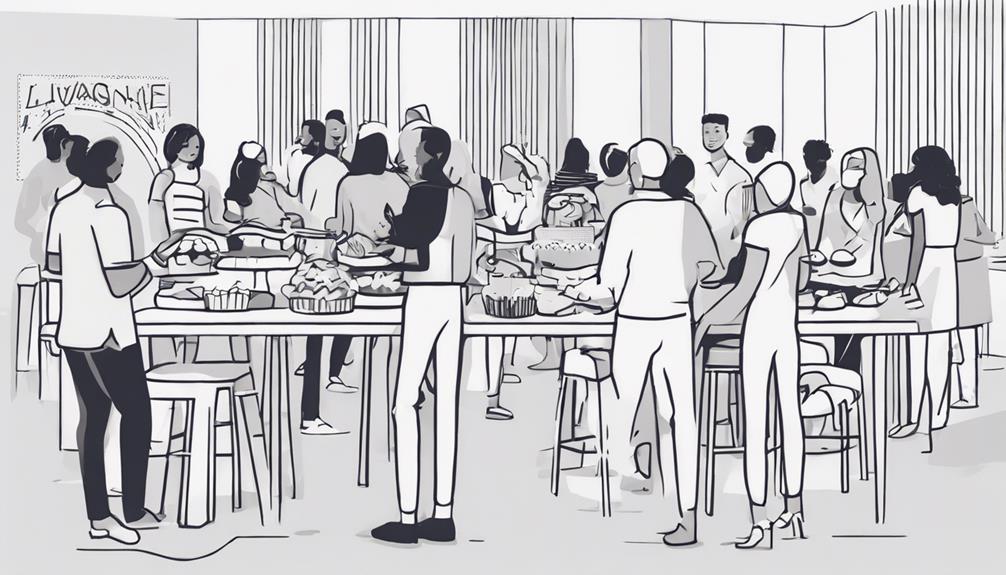
Fundraising events within communities play a pivotal role in mobilizing resources for critical causes and fostering a sense of collective responsibility among participants. Despite the positive impact of community fundraising events, it is crucial to assess their effectiveness and sustainability. Here are four key points to consider:
- Diverse Causes: Community fundraising events raise money for a wide range of causes such as healthcare, education, and disaster relief. Understanding the specific needs of the community helps in targeting the fundraising efforts effectively.
- Unity and Impact: These events bring people together, creating a sense of unity and shared purpose. The donations collected from these events play a vital role in supporting nonprofit organizations and community initiatives, making a tangible impact on those in need.
- Engagement Strategies: Fundraising events can take various forms including charity walks, auctions, galas, and online campaigns. Implementing diverse engagement strategies ensures a broader reach and increased participation from the community.
- Long-Term Sustainability: While community fundraising events generate immediate support, ensuring long-term sustainability requires strategic planning and continuous engagement. Evaluating the outcomes and adjusting strategies based on feedback contribute to the lasting impact of these events.
Promoting Community Wellness
Community wellness initiatives play a crucial role in enhancing the overall well-being of a community. Through mental health awareness campaigns, physical fitness resources, and support networks for wellness, local organizations strive to address various health needs. Collaborative efforts between different stakeholders aim to improve access to healthcare, preventive care education, and support services in communities.
Health Initiatives in Communities
Numerous community health initiatives strategically target wellness promotion through a multifaceted approach encompassing education, prevention measures, and enhanced healthcare accessibility.
- Free health screenings, vaccination drives, and health education workshops support community members.
- Collaborations with local healthcare providers and organizations improve healthcare access and outcomes in communities.
- Initiatives targeting specific health issues such as diabetes, obesity, or mental health raise awareness and provide resources for community members.
- Engaging in community wellness activities like group exercise classes, healthy cooking workshops, and mental health support groups fosters a culture of well-being and support.
Support Networks for Wellness
Support networks for wellness play a crucial role in fostering community well-being by providing mental health resources, counseling services, and wellness programs. These networks offer a platform for individuals to access support groups where they can share experiences, receive emotional support, and learn coping strategies for various challenges. Additionally, community wellness initiatives focus on preventive healthcare measures, education on healthy lifestyles, and affordable healthcare services. Peer support networks are vital in promoting community wellness as they create a sense of belonging, reduce isolation, and encourage positive social interactions. Collaborations between local organizations, healthcare providers, and community members are essential in creating a holistic approach to supporting wellness in communities, ensuring that individuals have access to the necessary resources and services for their well-being.
Community Food Sharing Programs
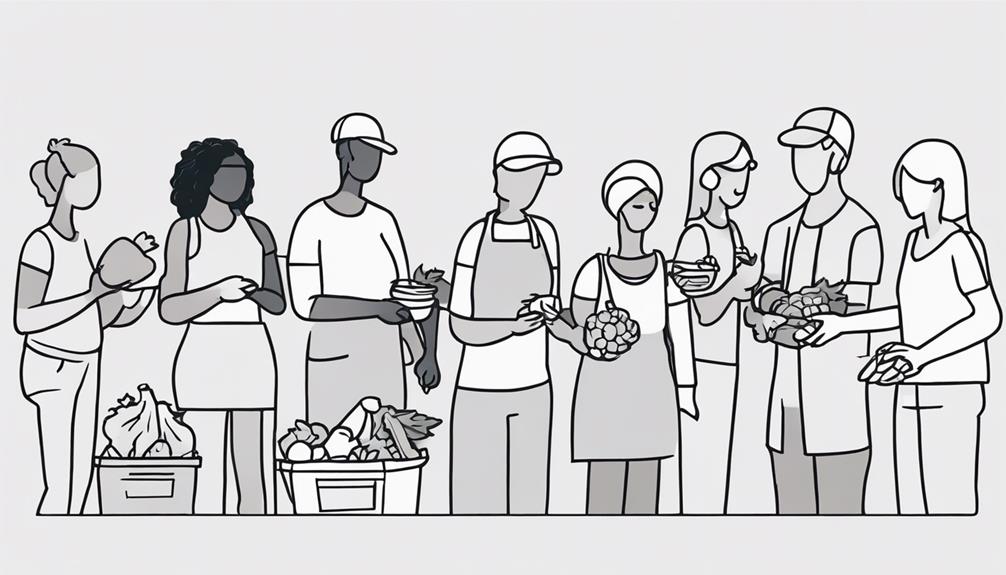
Redistributing surplus food through community food sharing programs is a practical solution to combatting food insecurity among individuals facing economic challenges. These programs rely on volunteers to help organize and facilitate the sharing of food within the community. Here are some key points to consider:
- Neighborly Support: Community food sharing programs involve neighbors coming together to share excess produce or meals, fostering a sense of solidarity and support within the neighborhood.
- Promoting Food Security: By redistributing surplus food, these programs play a crucial role in promoting food security among individuals who may struggle to access an adequate supply of nutritious food.
- Volunteer Engagement: Volunteers play a vital role in organizing community food sharing events, ensuring that no one in the neighborhood goes hungry and that food resources are distributed equitably.
- Reducing Food Waste: These initiatives help reduce food waste by encouraging the sharing of edible items that would otherwise be discarded, promoting sustainability and community cohesion.
Community food sharing programs not only address immediate food needs but also strengthen social bonds and promote a more sustainable approach to food consumption.
Community Emergency Response Teams
When considering the preparedness and response capabilities within communities, the presence of trained Community Emergency Response Teams (CERTs) emerges as a critical component in enhancing overall resilience and effectiveness during times of crisis. These teams consist of volunteers who undergo training in various disaster response skills, including fire safety, light search and rescue, and medical operations. By leveraging these skills, CERTs play a vital role in supporting first responders during emergencies, offering immediate assistance to those in need. The collaboration between CERTs and emergency management agencies at the local level is instrumental in fortifying community resilience. CERTs act as a crucial link between the occurrence of a disaster and the arrival of professional emergency services, ensuring a swifter and more efficient response. The table below highlights key aspects of Community Emergency Response Teams:
| Aspect | Description |
|---|---|
| Composition | Trained volunteers dedicated to emergency response efforts in communities |
| Training Provided | Basic disaster response skills such as fire safety and medical operations |
| Collaboration | Work closely with emergency management agencies to enhance community resilience |
| Role | Support first responders, provide immediate assistance during crises |
| Importance | Bridge the gap between disaster onset and professional emergency services |
Community Education Initiatives
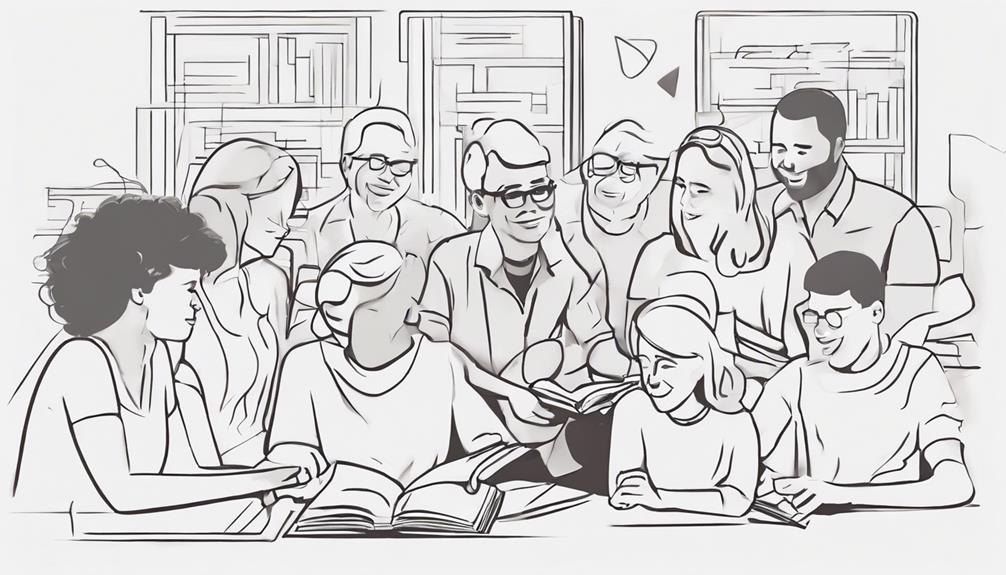
Community Education Initiatives play a pivotal role in fostering knowledge dissemination and skill development within diverse community settings.
- Community education initiatives help fill educational gaps by offering a wide range of courses, including literacy, numeracy, technology, and job skills training.
- Volunteer work is often crucial for the success of these programs, with local educators and partnerships with schools and organizations playing key roles in delivering educational services.
- These initiatives empower individuals of all ages to reach their full potential by providing essential learning opportunities that are either free or affordable.
- By focusing on education, community initiatives contribute to building a more informed and skilled population. This, in turn, can lead to increased employability, economic growth, and overall community well-being. Through these efforts, communities can work towards creating a more knowledgeable and capable society.
Community Environmental Conservation
Engaging in collaborative environmental stewardship efforts at the community level is essential for safeguarding natural resources and promoting sustainable ecosystems. Community environmental conservation involves local residents joining forces to protect and preserve the environment. Through initiatives like tree planting, beach clean-ups, and wildlife habitat restoration, community members actively contribute to reducing pollution, promoting biodiversity, and fostering sustainable ecosystems. By addressing environmental challenges such as deforestation, pollution, and habitat destruction through collective action, residents play a crucial role in ensuring the well-being of their local areas.
These community-led conservation projects not only benefit the environment but also help people by creating a healthier and more sustainable future for all. By actively engaging in community conservation activities, individuals can make a tangible difference in combatting environmental issues and preserving natural resources for future generations. Collaborative efforts in community conservation exemplify how local action can have a global impact in addressing pressing environmental challenges.
Frequently Asked Questions
How Do People Help Others in Your Community?
When examining how people help others in a community, it is evident that volunteer programs, mutual aid, and community projects play significant roles. Individuals engage in various activities such as volunteering at local organizations, participating in mutual aid networks, and contributing to community projects to support those in need. These initiatives foster a sense of solidarity and collaboration among community members, ultimately leading to positive outcomes for the community as a whole.
What Are Some Ways We Can Help Our Community?
To assist our community, individuals can engage in various activities. They can participate in volunteer opportunities at local organizations, organize fundraising events for community projects, join community cleanups, and contribute to food drives. Educational workshops can also be organized to empower community members, while establishing neighborhood watch programs can enhance safety and security. By actively participating in these initiatives, individuals can make a positive impact on their community's well-being and cohesion.
How Should People Help Each Other?
In considering how people should help each other, mutual support and kindness form the foundation for fostering strong community bonds. Volunteer opportunities and donations offer tangible ways to address immediate needs, while collaborative efforts and community engagement create a sense of unity and shared purpose. By prioritizing these approaches, individuals can contribute meaningfully to the well-being of their communities and promote a culture of support and interconnectedness.
What Can You Contribute to the Community?
When considering what one can contribute to the community, various volunteer opportunities, community projects, and fundraising events come to mind. Engaging in hands-on activities like gardening or disaster relief efforts can make a tangible impact. Supporting local charities or conservation projects is also vital. By participating in such endeavors, individuals can play a key role in fostering a strong and supportive community environment.
Conclusion
In conclusion, the ways in which people help each other in communities are crucial for fostering a compassionate and supportive society. Through neighborly acts of kindness, community volunteer initiatives, building support networks, and collaborative projects, individuals can make a positive impact on the lives of others. It is said that "many hands make light work," emphasizing the importance of collective efforts in creating a stronger and more resilient community.
